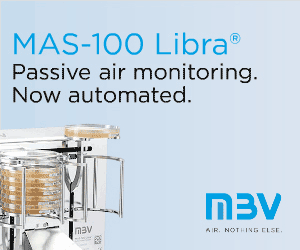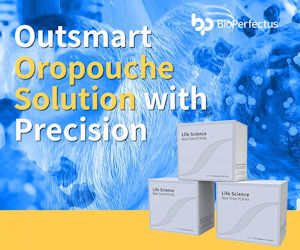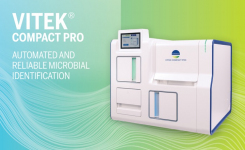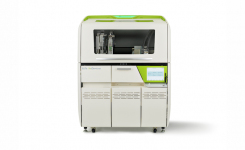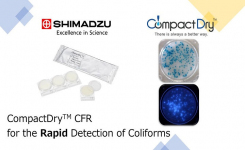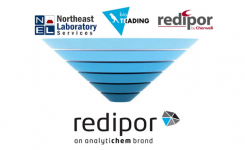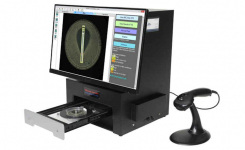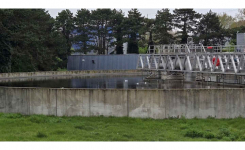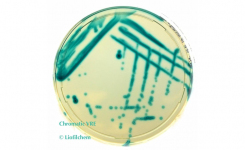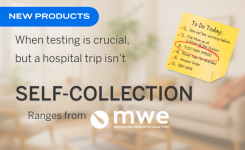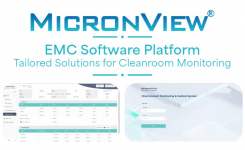Key Points:
- analysis of the genome can be used for microbial identification
- or for typing beyond species level
- requires significant investment in capital equipment and technician training
- whole genome sequencing (WGS) is fast becoming a feasible typing method for microbiology laboratories
 Since microorganisms were first isolated and grown in pure culture, microbiology laboratories have needed to characterize isolates so that they can be differentiated from one another. Schemes that can be used to describe the characteristics of a microbial isolate are essential in every branch of microbiology and their development and refinement have been constant. The advent of molecular biology in the 1980s contributed a set of powerful new tools that have helped microbiologists to detect the smallest variations within microbial species and even within individual strains. This has added an entirely new dimension to a science that was in danger of becoming constrained by its reliance on traditional laboratory techniques.
Since microorganisms were first isolated and grown in pure culture, microbiology laboratories have needed to characterize isolates so that they can be differentiated from one another. Schemes that can be used to describe the characteristics of a microbial isolate are essential in every branch of microbiology and their development and refinement have been constant. The advent of molecular biology in the 1980s contributed a set of powerful new tools that have helped microbiologists to detect the smallest variations within microbial species and even within individual strains. This has added an entirely new dimension to a science that was in danger of becoming constrained by its reliance on traditional laboratory techniques.
In fact, the technology has progressed far beyond the level needed by most routine laboratories, where identifying the species of any isolate is likely to be sufficient. Distinguishing between different strains of the same species – typing – is more likely to be of value in a research laboratory or in more specialized fields, such as epidemiology. Nevertheless, methods and equipment designed to help with both species identification and typing are commercially available for a range of applications.
Species Identification The identification of a microbial isolate to species level only amounts to a partial characterization of the isolate, but is still a very useful piece of information. Knowing the species allows the laboratory access to the body of knowledge that exists about that species. For example, is it a known human or animal pathogen, or is it likely to multiply in a product and cause spoilage? An identification of the species may also provide a clue as to the source of a contaminant.
The number of recognised genera and species of microorganisms is constantly growing and this process has accelerated since microbiologists acquired the ability to investigate the genetic relationships between different isolates. By the end of 2013, The List of Prokaryotic Names with Standing in Nomenclature (LPSN) contained almost 16,000 taxa - in 1980 there were just over 2,300. Despite this, it is still possible for routine microbiology laboratories to identify many isolates to genus, and often to species level using a remarkably small number of key tests. Identification schemes using characteristics such as colony and cell morphology, Gram reaction and other staining characteristics, nutritional and physical requirements for growth, metabolic characteristics and pathogenicity factors have been developed and improved over many decades to a point where even small laboratories are able to identify isolates to species level using fairly simple traditional test procedures.
Many of these tests, especially those related to metabolic characteristics, have been packaged into easy-to-use kits and even automated systems, equipped with internal databases, against which isolates can be compared to obtain an accurate identification. Such kits and systems provide in most cases, a result within the same working day or next day, and achieve very significant savings in materials and technician time, largely replacing the need to perform manual tests on individual isolates.
The characteristics used in traditional microbial identification schemes are all observable aspects of the organism’s structure and function. In other words they are phenotypic characteristics and are the products of gene expression. By looking directly at the microbial genome itself it is possible to identify a species using its genotypic characteristics. For example, many bacterial species can be identified by sequencing specific sections of ribosomal DNA – the 16S rRNA gene is most commonly used - after amplification by PCR, and then comparing the results to sequences stored on a related database.
The commercially available system based on this technology is a valuable complementary tool to other routine identification technologies. However, identification based on the 16S rRNA gene is by no means infallible. Indeed as the sequence stretch analysed is a reduced section of the full genome and the variability of this marker is low, many different species do share the same 16s sequence. For example, some Bacillus species that can be readily differentiated by other means share the exact same 16S rRNA sequences. Furthermore, the accuracy of the system is dependent on the quality of the database against which the sequence is compared.
Typing
There are a number of reasons why it may be necessary to characterize a microbial isolate beyond species level and determine its sub-species, strain, or even sub-strain. For example:
- To relate individual cases to an outbreak of infectious disease
- To establish an association between an outbreak of food poisoning and a specific food vehicle
- To study variations in the pathogenicity, virulence and antibiotic resistance of individual strains within a species
- To trace the source of contaminants within a manufacturing process
- To study the microbial ecology of complex communities, such as biofilms
- To characterize microorganisms with important industrial applications
Typing is by no means new and it has been possible to type some isolates on the basis of serological testing for decades. The obvious example is the Kauffmann-White scheme for Salmonella. There are only two species of Salmonella, but about 2,500 serovars, all typeable by the reaction between specific antibodies and antigens on the cell wall and flagellae. Phage typing has also been used for many years to type certain bacterial pathogens. Other traditional typing systems include biotyping (based on detailed biochemical characteristics), bacteriocin typing and protein typing.
These are all phenotypic typing techniques relying on expressed characteristics and some have been developed into sophisticated systems with a range of applications. For example, rapid, semi-automated Salmonella serotyping systems have been developed and typing of extracted cell proteins can be carried out using mass spectrometry techniques such as MALDI-TOF (Matrix Assisted Laser Desorption Ionisation - Time of Flight). Analysis of cellular fatty acid methyl esters (FAMEs) by gas chromatography has also been used to type bacteria successfully. Some of these techniques have been developed into commercial typing systems that include profile databases and software to assist with accurate typing.
Genotyping The development of techniques for direct study of the microbial genome, notably amplification by PCR, has led to a relative explosion of published methods for genotyping microorganisms over the last 25 years. At the same time the value of genotyping has been widely recognised, not only in clinical microbiology, but also in the pharmaceutical sector. The US Food and Drug Administration (FDA) has highlighted the value of genotyping for investigation purposes thus, "These methods are especially valuable for investigations into failures (e.g., sterility test: media fill contamination)." A multiplicity of techniques for analysing DNA extracted from microbial cells – often termed ‘DNA fingerprinting’ – have been developed for typing and some of the more widely used methods are outlined below.
1. Pulsed-field gel electrophoresis (PFGE) – a technique that allows the electrophoretic separation of low numbers of large DNA restriction fragments produced using restriction enzymes to generate a highly discriminatory genetic fingerprint. Widely used and still the method of choice in the typing of human bacterial pathogens and the investigation of disease outbreaks. PFGE is relatively costly and requires at least three days to obtain a result. The degree of discrimination also depends on choice of restriction enzymes.
2. Multilocus sequence typing (MLST) – sequencing 400-500 base pair fragments of DNA at seven different conserved genes allows small variations within a species to be detected. Quite time consuming and costly, but can be highly discriminatory if the genes are correctly chosen.
3. Multilocus variable number of tandem repeats analysis (MLVA) - a technique related to MLST based on PCR amplification and sequencing of rapidly mutating repetitive DNA sequences called tandem repeats. The result is an MLVA pattern characteristic of the bacterial strain under investigation. MLVA is faster and easier to perform than MLST, but there are issues with reproducibility and validation.
4. Ribotyping – this technique relies on the relative stability of the 16S and 23S rRNA genes coding for ribosomal RNA. The genes are cut using restriction enzymes and resulting DNA fragments separated by electrophoresis. The resulting fingerprint is visualised using fluorescent probes. Ribotyping has been developed into an automated system that is commercially available with dedicated databases (Riboprinter®). It is rapid (<24 hours to result), reproducible and works for a wide range of bacterial species, but is relatively costly in terms of equipment.
5. Repetitive sequence-based PCR (rep-PCR) – bacterial and fungal genomes contain numerous non-coding, repetitive DNA sequences separating longer, single copy, sequences and their arrangement varies between strains. The rep-PCR technique relies on amplifying these repetitive sequences to produce amplicons of varying length that can be separated by electrophoresis giving a fingerprint comprised of bands that fluoresce at different intensities after binding with an intercalating dye. Rep-PCR has also been developed into a commercial typing system (DiversiLab™) giving rapid results and using dedicated software to aid typing. The system is widely used for typing human pathogens.
6. DNA Microarrays - a microarray is a collection of DNA probes attached in an ordered pattern onto a solid surface. These probes can be used to detect the presence of complementary sequences in bacterial isolates, and thus can detect marker genes in specific bacterial strains. Alere™ Technologies GmbH has developed microarrays into a commercial typing system for a number of bacterial pathogens in the shape of its Array Tube and Array Strip platforms.
Whole Genome Sequencing
All of the genotyping methods mentioned above have their limitations and ideally one would sequence the entire genome of a microbial isolate to provide definitive typing. Until quite recently, this would have been very costly and taken years to complete, but the advent of next-generation sequencing (NGS) technology, such as the Ion Torrent™ platform from Life Technologies and the Illumina sequencing system, make whole genome sequencing (WGS) within days a practical option. Now that high-throughput bench-top NGS instruments like Life Technologies' Ion PGM™ and the Illumina NextSeq 500 are available, WGS is within the reach of smaller clinical microbiology and research labs. The costs of NGS are falling and an entire bacterial genome can now be sequenced for about the same price as MLST typing using conventional PCR/Sanger sequencing.
The main problem with WGS at present is the difficulty of interpreting the huge amount of data generated and identifying and extracting the genetic information that is important from a typing point of view. The rapidly evolving discipline of Bioinformatics promises to provide the solution to this problem by developing computer software to analyse sequencing data and building interactive databases where data can be stored and accessed. Some of these databases are available on-line on an open access basis for researchers to use. For example, the PubMLST website hosted by Oxford University’s Department of Zoology holds a growing collection of more than 50 MLST databases for molecular typing and microbial genome diversity.
WGS has already been used to investigate the genetics of human pathogens involved in outbreaks and promises to revolutionise the process in the near future. For example, during the foodborne German E. coli O104:H4 outbreak in 2011, the entire genome of the outbreak strain was sequenced within three days, confirming the findings of other typing methods and adding valuable information about the likely origin of the strain and its relationship with other isolates. The potential benefits of WGS mean that it is almost certain to replace PFGE as the gold standard for pathogen typing in the near future.
Outsourcing of Species Identification and Typing
Even with the development of less expensive sequencing instruments, unless a laboratory has a specific requirement for identification and typing of large numbers of isolates on a regular basis, modern molecular techniques may not be appropriate for smaller routine operations. Capital and operating costs are relatively high unless economies of scale can be achieved and it may be more cost effective to outsource occasional identification and typing needs. Fortunately, a number of commercial laboratories offer these services, especially genotype-based identification and typing, which is still beyond the scope of many routine laboratories. Outsourcing has the benefit of allowing labs to take advantage of the latest identification and typing methods to fully characterize isolates, without the need for capital investment and staff training. For example, Charles River's Accugenix® cGMP-compliant Microbial ID and Strain Typing service offers identification and typing of bacterial and fungal environmental isolates using a combination of techniques, including 16s rDNA sequencing and MALDI-TOF. The service also includes access to the Accugenix Customer Web Portal, which provides a secure data management tool to track and trend specific organisms for monitoring purposes.


